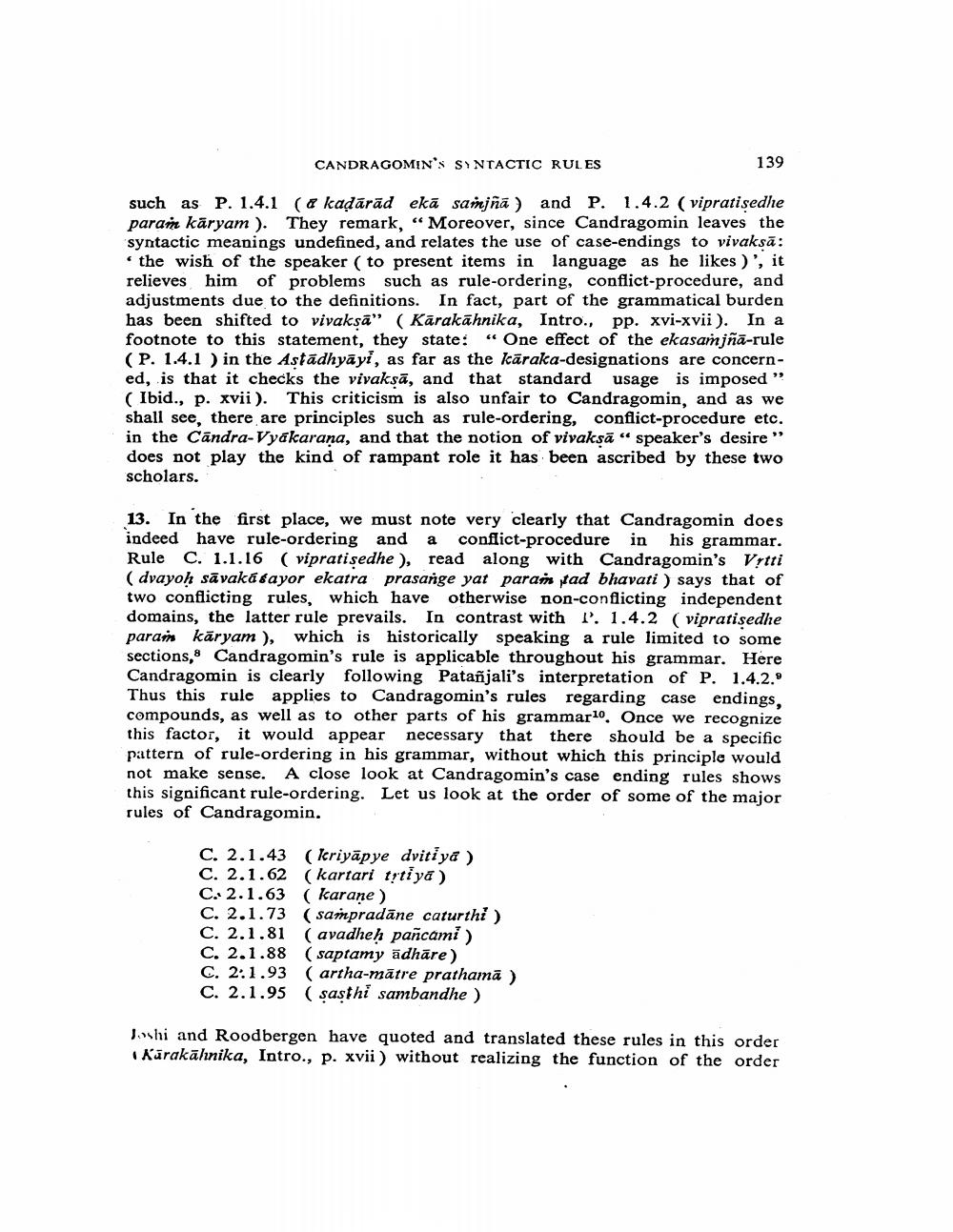Book Title: Candragomins Syntactic Rules Some Misconceptions Author(s): Mahadev Deshpande Publisher: Mahadev Deshpande View full book textPage 7
________________ CANDRAGOMIN'S SYNTACTIC RULES such as P. 1.4.1 (a kaḍārād ekā samjñā) and P. 1.4.2 (vipratiṣedhe param kāryam). They remark, "Moreover, since Candragomin leaves the syntactic meanings undefined, and relates the use of case-endings to vivakṣā: the wish of the speaker (to present items in language as he likes)', it relieves him of problems such as rule-ordering, conflict-procedure, and adjustments due to the definitions. In fact, part of the grammatical burden has been shifted to vivakṣa" (Kārakāhnika, Intro., pp. xvi-xvii). In a footnote to this statement, they state: "One effect of the ekasamjñā-rule (P. 1.4.1) in the Aṣṭādhyāyi, as far as the karaka-designations are concerned, is that it checks the vivakṣā, and that standard usage is imposed " (Ibid., p. xvii). This criticism is also unfair to Candragomin, and as we shall see, there are principles such as rule-ordering, conflict-procedure etc. in the Candra-Vyakarana, and that the notion of vivakṣā " speaker's desire " does not play the kind of rampant role it has been ascribed by these two scholars. 13. In the first place, we must note very clearly that Candragomin does indeed have rule-ordering and a conflict-procedure in his grammar. Rule C. 1.1.16 (vipratiṣedhe), read along with Candragomin's Vṛtti (dvayoḥ savakásayor ekatra prasange yat param tad bhavati) says that of two conflicting rules, which have otherwise non-conflicting independent domains, the latter rule prevails. In contrast with P. 1.4.2 (vipratiṣedhe param karyam), which is historically speaking a rule limited to some sections, Candragomin's rule is applicable throughout his grammar. Here Candragomin is clearly following Patañjali's interpretation of P. 1.4.2. Thus this rule applies to Candragomin's rules regarding case endings, compounds, as well as to other parts of his grammar10. Once we recognize this factor, it would appear necessary that there should be a specific pattern of rule-ordering in his grammar, without which this principle would not make sense. A close look at Candragomin's case ending rules shows this significant rule-ordering. Let us look at the order of some of the major rules of Candragomin. C. 2.1.43 (kriyapye dritiya) (kartari tṛtiya) C. 2.1.62 C. 2.1.63 (karane) 139 (sampradane caturthi ) (avadheḥ pañcami) (saptamy adhare) (artha-matre prathamā) C. 2.1.73 C. 2.1.81 C. 2.1.88 C. 2:1.93 C. 2.1.95 (sasthi sambandhe) Joshi and Roodbergen have quoted and translated these rules in this order Karakāhnika, Intro., p. xvii) without realizing the function of the orderPage Navigation
1 ... 5 6 7 8 9 10 11 12 13
